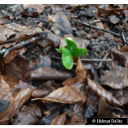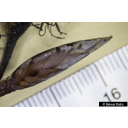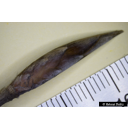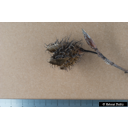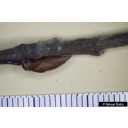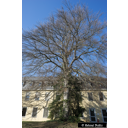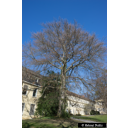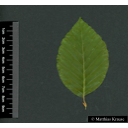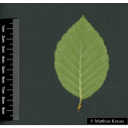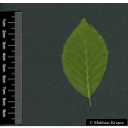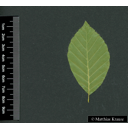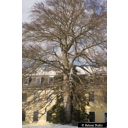Useful information about the taxon (species, subspecies, variety...)
Fagus sylvatica L. 1753
Fagaceae
(APG IV)European beech
Taxon concept: Schmeil-Fitschen 2019
Distribution: Europe, Turkey
Fagus sylvatica L. - : Fagus sylvatica L. bei Zander 2008; Familie: Fagaceae (Zander 2008)Fagus sylvatica L. - Accepted: Fagus sylvatica L. bei The Plant List (2010); Familie: Fagaceae (APG III)Fagus sylvatica L. - Accepted: Fagus sylvatica L. bei The Plant List (2014), version 1.1; Familie: Fagaceae (APG III)Fagus sylvatica L. - Accepted: Fagus sylvatica L. bei The Plant List (2014), version 1.1; Familie: Fagaceae (APG IV)Fagus sylvatica L. - Accepted: Fagus sylvatica L. bei The Plant List (2010); Familie: Fagaceae (APG IV)Fagus sylvatica L. - Accepted: Fagus sylvatica L. bei BfN Checklist Flora DE; Familie: Fagaceae (APG IV)Fagus sylvatica L. - Accepted: Fagus sylvatica L. bei World Flora Online; Familie: Fagaceae (APG IV)Fagus sylvatica L. - Accepted: Fagus sylvatica L. bei World Flora Online - APG IV (Angiosperms); Familie: Fagaceae (World Flora Online - APG IV (Angiosperms))
- Flowers
- monoecious flowers; male flowers in long-stalked, drooping, globular catkins and female flowers in erect inflorescences
- Flower ecology
- wind-pollinated (anemophilous)
- Life form
- woody, tree
- Leaves
- ciliate
- Foliage persistence
- deciduous
- Fruits
- fruit is a triangular nut (beechnut) with two nuts being enveloped in a spiny cupule
- Fruit ecology
- barochorous and zoochorous (squirrels, rodents, birds)
- Soil conditions
- preferentially on fresh, percolating, well-drained, sandy-stony, loamy soils of medium depth
- Light conditions
- shade tree
- Root type
- deep-rooting plant (heart-shaped root system)
- Natural occurrence (habitat)
- mesophile mixed deciduous forests, beech forests on limestone, pollarded woods; in summer moist climate sides
- Vegetation typ and synecology (plant community)
- temperate, mesophytic broad-leaved deciduous and mixed forests; mainly in the Fagion, but also in Quercion rob., Querco-Fagetea-species
- Constraints according soil conditions
- not salt tolerant; not tolerant to waterlogged or compacted soil
- Usage
- as firewood or charcoal; wear resistant wood used for furniture, parquet floors, musical instruments, etc.; beech nuts as food for pigs
- Bark
- smooth, silver-grey bark
Erhardt, W., Götz, E., Bödeker, N. & Seybold, S. (2008): Der große Zander. Enzyklopädie der Pflanzennamen. Band 2. Arten und Sorten. Eugen Ulmer KG, Stuttgart (Hohenheim), 18. Aufl., 2103 S.; Haider, M. et al. (2005): Wildbienenkataster. See: https://www.wildbienen-kataster.de; Maurizio, Anna et al. (1982): Nektar und Pollen - die wichtigsten Nahrungsquellen der Honigbiene. 4. Ehrenwirth, München, 3, überabeitete Auflage; Oberdorfer, E. (2001): Pflanzensoziologische Exkursionsflora. Für Deutschland und angrenzende Gebiete. Eugen Ulmer Verlag, Stuttgart, 8., stark überarb. u. erg. Aufl, 1056 S. 978-3-8001-3131-0.; Pritsch, Günter et al. (1985): Bienenweide.. Neumann-Neudamm, Melsungen; Ruppertshofen, Heinz et al. (1995): Der summende Wald - Waldimkerei und Waldhygiene.. Ehrenwirth, München, 8., völlig neubearb. und erw. Aufl.; Schick, B. & Spürgin, A. (1997): Die Bienenweide. Eugen Ulmer Verlag, Stuttgart, Auflage: 4., völlig neubearb. u. erw. A., 216 S. 978-3800174188.; The International Plant Names Index (2009). Published on the Internet http://www.ipni.org; Courtesy to IPNI, 2009. Exported from IPNI at date: 2009-09-22 20:17:51; Werle, Susanne et al. (2015): ITS2 DNA metabarcoding of wild bee pollen loads, collected in 2020 and 2021 across all three exploratories. See: https://www.bexis.uni-jena.de/ddm/data/Showdata/31545?version=6; Westrich, P. et al. (2018): Die Wildbienen Deutschlands.. Ulmer Verlag ISBN 978-8186-0123-2.;
Diese Webseite verwendet Google Maps, um Karten und Standorte von Pflanzen in den Hohenheimer Gärten anzuzeigen. Dadurch werden unter Umständen Daten an Google weitergeleitet, was mit einer Verarbeitung Ihrer personenbezogenen Daten verbunden sein kann. Die Datenschutzerklärung von Google finden Sie hier: Datenschutzerklärung von Google
| Locality | Datum (ISO) | Agent | Lat. | Long. | Projekt |
|---|---|---|---|---|---|
| Hohenheimer Gärten – Schlosspark32 | 2021-06-18 | Nathalie Hund | 48,71088 | 9,21497 | Bachelorarbeit |
| Hohenheimer Gärten – Schlosspark35 | 2021-06-23 | Nathalie Hund | 48,71109 | 9,21573 | Bachelorarbeit |
| Hohenheimer Gärten – Schlosspark36 | 2021-06-23 | Nathalie Hund | 48,71099 | 9,21553 | Bachelorarbeit |

